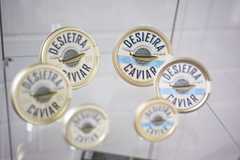Farmed caviar / Germany
Like a surgeon
With wild sturgeon disappearing from the Caspian Sea, sustainable caviar production from farms is taking over. At Desietra in Germany even the much sought-after Beluga caviar can now be produced. And it’s winning over the fussiest chefs.
Ten large sturgeon of the species Acipenser Gueldenstaedtii swim slowly around in a Jacuzzi-sized tub full of icy water – the cold temperature relaxes the fish. A white-aproned, welly-wearing fishmonger picks a sturgeon up and with a precise knock on the head puts an end to its six to seven-year-long life. With a sharp, hook-like knife he slits the fish’s stomach open and lifts out the valuable roe. This sturgeon weighs 11.3kg and is carrying 2.27kg of roe, which will be turned into caviar following a simple process. We are in Fulda, an hour’s drive from Frankfurt, visiting Desietra, one of the big players in farmed caviar. Wild sturgeon in the Caspian Sea are close to extinction due to overfishing and black market caviar trading, so agricultural caviar production is now flourishing.
Desietra has farms in Germany, the Netherlands and Hungary. Other companies run similar farms in Italy, France, Bulgaria, the US and Canada – and soon China will enter the market.
“No matter how optimistic you are there’s no way that wild sturgeon in the Caspian Sea or elsewhere will provide enough caviar. Agricultural caviar is the eco-friendly and sustainable alternative. You can buy it with a clean conscience,” says Christian Zuther-Grauerholz, managing director of Dieckmann & Hansen Caviar, a Hamburg-based caviar trader that dates back to 1869 and is now Desietra’s trading company.
Next to him stands his Danish customer, Jacob Marsing-Rossini who, in 1999, established Rossini Caviar in Copenhagen – today he is the leading caviar trader in Scandinavia supplying 18 to 20 Michelin-starred restaurants. His products are stocked in Copenhagen, Stockholm and Amsterdam airports, Singapore Airlines’ Suites and last year he added several Dubai hotels and Gordon Ramsay restaurants to his client list. “Ten years ago the quality of farmed caviar was unstable. Today, several farms provide caviar of a high and homogeneous quality,” says Marsing-Rossini – he gets his goods from farms in France, Italy and Germany and his strategy is clear: “When I approach new restaurants, I steer clear of food and beverage managers and marketing people. Instead I go directly to the chefs and line up a blind test, where the chefs taste farmed caviar up against caviar from the Caspian Sea. The result is always the same: they prefer the farmed caviar. When they hear that the price is one third of the wild Caspian caviar and production is sustainable, it leaves them with no arguments to favour the Caspian caviar,” he says.
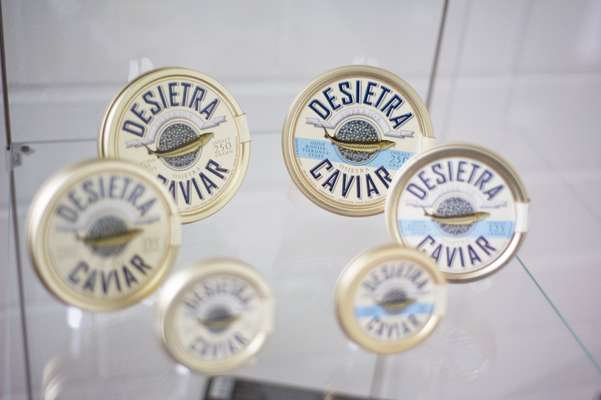
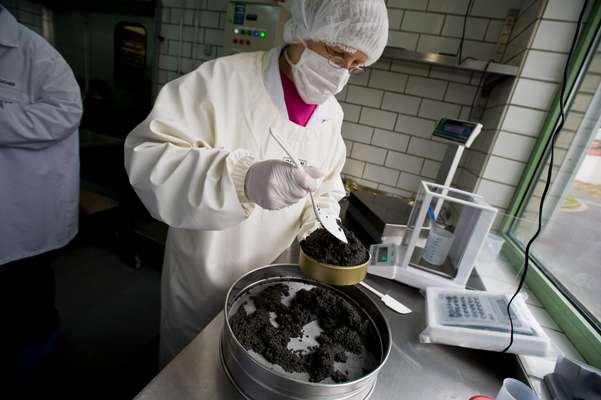
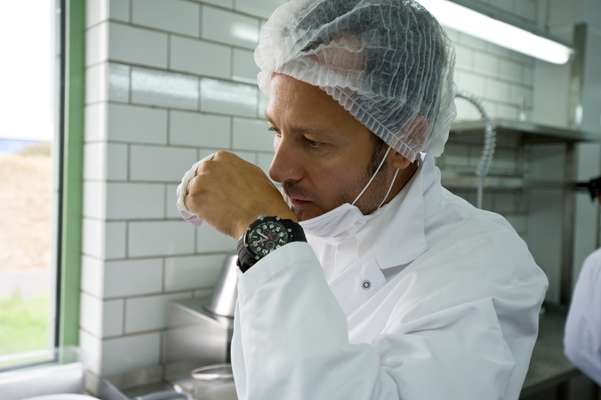

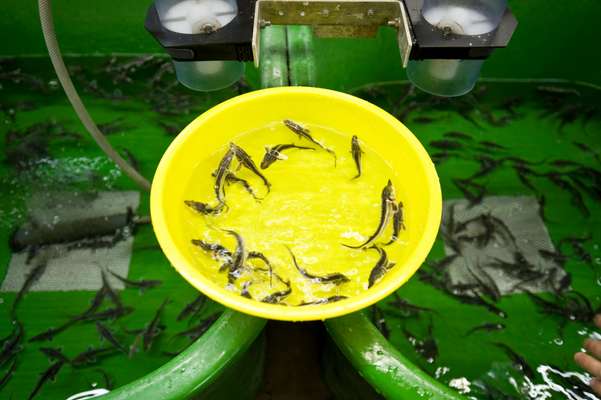
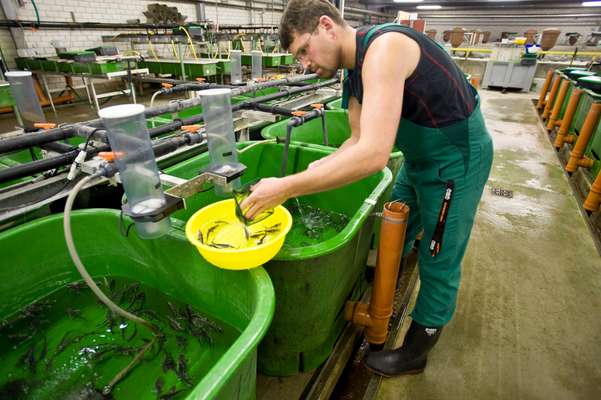
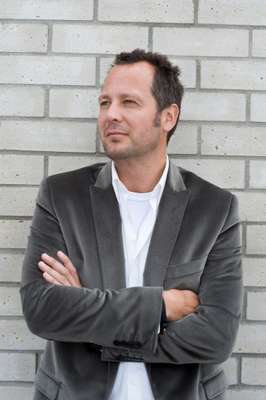
The 2.27kg roe from our fish is washed in sterilised water through a sieve. A sample is taken and each egg measured with a digital calliper. The roe is then salted and the natural preservative borax is added (Desietra also produces pure salt caviar) before being packed in tins. At this point the roe has a mild hazelnut flavour – after six to 12 weeks the salted roe is suitable for consumption as caviar.
Meanwhile, the 11.3kg sturgeon and its nine companions in the plastic tub are cut into fillets to be smoked or sold fresh. The heads are used for fish stock and the fins are turned into glue used in painting restoration and violin construction. Even the skin is used as a kind of leather.
Desietra has 130 tons of sturgeon in 46 indoor pools and does not use chemicals, pharmaceutical additives or hormones. Five species are at the farm: Acipenser Baerii, Acipenser Gueldenstaedtii, Acipenser Sterlet, Acipenser Stellatus and the Huso Huso, which could weigh up to 200kg and produces the most famous caviar of them all, Beluga.
Desietra has its own egg hatchery, which means it follows the development of each female fish. Director of the farm and production areas, Mesfin Belay, explains: “You cannot determine the sex of a sturgeon until the age of two. It is done with ultrasound. If it’s a male and therefore not able to produce any roe, it means goodbye. The fish has to leave the farm.”
The male sturgeon are either sold as meat or sent to farms where fishermen are allowed to practise catching them. With their strong, shark-like body they are said to put up a good fight. Desietra slaughters 35 to 45 sturgeon four days a week. It made 4.8 tons of caviar in 2008 and aims to produce 10 tons in 2012. It has 28 employees.
A 50g tin of farmed caviar costs about €160 compared to €350-€400 for wild caviar from the Caspian Sea and since fishing there was banned the price is constantly rising. But that will change, to the benefit of the consumer: “With all the caviar farms popping up, we are rapidly facing a situation where availability far exceeds demand. That means that the price will fall dramatically in the years to come,” says Marsing-Rossini.
Eggstra special
Caviar is often used as topping, a way to show off, a gastronomical symbol of wealth and decadence, which is a pity, according to Jacob Marsing-Rossini of Rossini Caviar in Copenhagen. For the past five years he has collaborated with some of the best chefs in Scandinavia, making them “caviar ambassadors” who use caviar as a main ingredient to add a unique flavour to a course – not just to add to the bill.
Restaurants with signature caviar dishes:
Denmark: Paustian, Søllerød Kro, The Paul and Kong Hans in Copenhagen and Falsled Kro on Funen.
Sweden: Fredsgatan 12, Esperanto, Lux and Operakällaren in Stockholm and Gastro in Helsingborg.
Norway: Engø Gård in Tjøme and Oro in Oslo.

